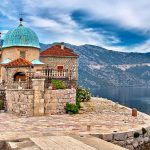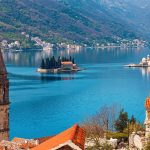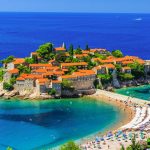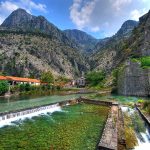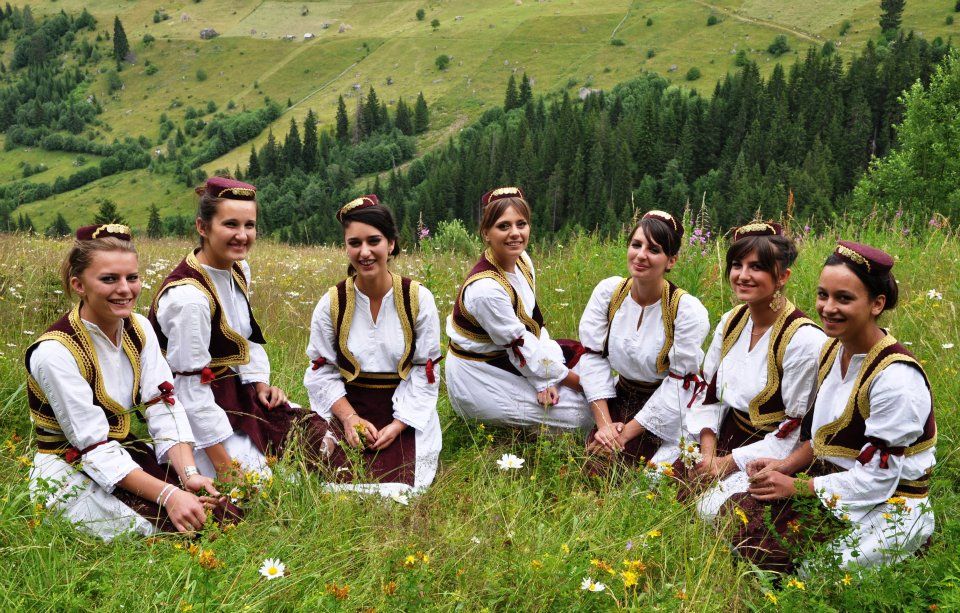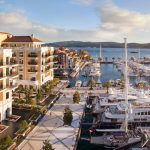Ever since the Roman Empire split in two 1600 years ago, Montenegro has sat on the borderline between east and west. The richness of its cultural history can be seen in the mosaic floors of Roman villas, flamboyantly painted Orthodox monasteries, ornate Catholic churches, elegant minarets of mosques, and the sturdy fortresses built by the numerous powers that have fought over these lands. Then there’s the legacy of 50 years as a non-aligned communist state, independent of both the Eastern Bloc and the West. For those with even a passing interest in European history, it’s a fascinating place.
Money
The monetary unit in Montenegro is the Euro. Some ATMs accept Visa or Mastercard, but few accept international debit cards. Carrying cash is advisable and may be necessary for most payments.
Eating and Drinking
The cuisine in Montenegro has a distinctly Italian influence, so keep an eye out for national specialities such as lamb or kid’s meat, pizza, polenta, stuffed capsicums, cheese and sour cream and Vienna-style bread, clear fish soup, and prsuta (smoked ham) and steak from a region in Montenegro called Durmitor. Turkish influences can be found in moussaka (a baked aubergine and minced meat) and cevapi (skinless sausages or meatballs served with onions, peppers and bread). Other specialities include gibanica (thinly layered pastry, eggs and feta cheese, burek (a pastry layered with cheese or meat), and ajvar (a relish made of roasted red peppers, aubergine and garlic). Fresh fish such as carp, trout and eel come from the Skadar Lake. Vegetables such as chicory, asparagus, leeks, fennel and nettles are common to many dishes.
National drinks you may wish to try are plum brandy (slivovica), niksicko beer, lozova rakija (grape brandy) and wine. Please note that most places serving alcohol close by 10pm.
Tipping
It is customary to give round up the taxi fare and leave an extra Euro 1-2 extra at restaurants. Tipping guides at the end of excursions is always appreciated and your tour leader will advise you on the amount for this.
Australian Government Travel Advice
The Australian Government provides up to date information on the safety of travelling to various countries, and all travellers should take note of this advice. Liberty Tours recommends that all travellers take out appropriate Travel Insurance to cover the entire duration of their absence from home. Liberty Tours can assist with obtaining Travel Insurance.
Follow this link for current official assessment:
https://www.smartraveller.gov.au/destinations/europe/montenegro
Advice on health risks and vaccination recommendations can also be found using the same link.
Weather
The climate of Montenegro is Mediterranean on the coast, with heavy rains from September to April, while moving inland it becomes progressively more continental, with colder winters, also due to the higher altitude.
Precipitation in Montenegro is plentiful, especially in the coastal strip and in hilly and mountainous regions overlooking the sea. The rains are not very frequent, but when it rains, it rains a lot. The rainy season is long and runs from September to April; sometimes, the rains are torrential. Certain areas of Montenegro receive the highest amounts of rain of the entire European continent. In addition, in inland areas and mountain ranges, additional rainfall occurs in the form of afternoon thunderstorms in late spring and summer (more frequently in May and June). On the contrary, on the coast and in Podgorica, at least rainfall decreases in summer, when thunderstorms are rare.
What to pack
In winter: in the inland region, bring warm clothes, a down jacket, a hat, a scarf, gloves, a raincoat or umbrella. In Podgorica and the coast: warm clothes, such as a sweater, a jacket, a raincoat or umbrella.
In summer: in the inland region, bring light clothes, a T-shirt, but also long pants, a light jacket and a sweatshirt for the evening; an umbrella. In Podgorica and the coast: light clothing, and possibly a sweatshirt for the evening, especially in June.

